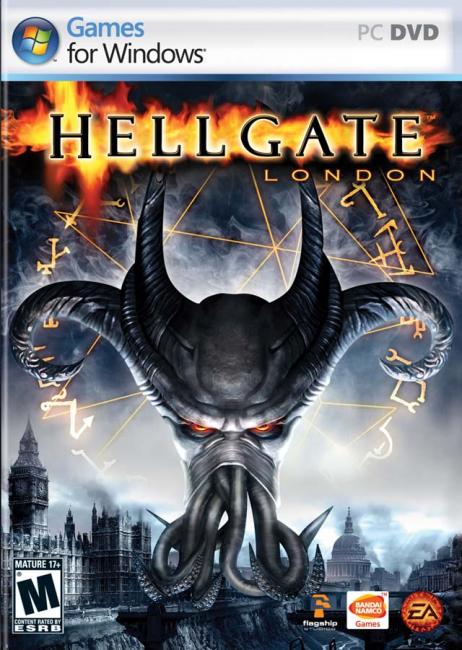Hellgate: London Review
-
Category: ReviewsHits: 15424

Article Index
Page 3 of 4
Equipment The equipment in Hellgate: London is fairly standard. Characters get ten equipment slots (including a (dye kit) slot that changes your equipment color). An item can be rated as (enhanced,) (rare,) or (legendary) depending on how powerful it is. Items can have up to five bonuses, and weapons can also have up to seven mods attached. There are unique items, but there aren't any set items (or at least I didn't see any).
In fact, I only noticed two things of interest in the Hellgate: London equipment, one of which I liked and one of which I didn't. Let me start with the thing I didn't like: item levels. Each item has a level associated with it, and the level controls whether you can use it or not. That much is fine, but weapon mods also have levels, and while you can upgrade your weapons in the game (which increases their level), you can't upgrade mods, and if the level of the mod falls too much below the level of the weapon, then it stops functioning.
Mods don't really change during the course of the campaign. It's not like you find mods with small bonuses when you start out and mods with big bonuses at the end. The bonuses stay about the same (with randomness thrown in), and all that changes is their level, with the levels getting higher the farther you progress. That means when you're forced to replace mods, you're not really making your weapon any more or less powerful; you're just spending a lot of time and energy to maintain the status quo, and eventually I found this to be a little bit tedious. Why create a headache for players when it doesn't really change anything?
On the brighter side, I liked Hellgate: London's system for upgrading and breaking down equipment. It used to be that the only way to improve your gear in an action role-playing game was to continuously hunt down new equipment to replace your old equipment, but now there's starting to be a trend where games allow you to upgrade your equipment so that it doesn't need to be replaced. Hellgate: London gives you a few options in this regard.
For starters, equipment can be broken down into eight different components. Components can then be used with blueprints or special craftsmen merchants to create new items (this is the best way to acquire new mods), and they can also be used to increase the level of your equipment (which in turn increases the damage of weapons and the armor and shield ratings of worn items). But you can't just break everything down because you also need money. Money allows you to buy things, of course, which is always good when you need a few more health injectors or a personal relocation device, but it also allows you to add random bonuses to items, with the more money you spend resulting in better bonuses.
That means you need a lot of money and a lot of components, and so you always have to make a decision when you pick up some excess equipment (which is all the time). Do you sell it for money or do you beak it down for components? I took the lazy approach to this question and only broke down equipment when my inventory was full and I didn't want to return to a base yet. This kept me in the field longer, but it ended up giving me way more components than I could use, and so there are probably better answers out there. But regardless, the system gives you options, forces you to make decisions, and creates a working economy, which by my book is a pretty good trifecta.
The Interface
Hellgate: London can be played with an over-the-shoulder view or a first-person perspective. Melee characters have to use the over-the-shoulder view, and I know of at least one skill (Sniper) that requires a first-person perspective, but otherwise the choice is up to you, and the game seems to work pretty well either way. I used the over-the-shoulder view because I always like to see what my character is doing.
Given the available perspectives, the controls are about what you would expect. The WASD keys move your character and the mouse pointer steers and aims. Skills, spells, and weapons can be mapped to hot keys (including the Q and E keys) and the mouse buttons, in any way you want. There are also (battle sets) mapped to the F1-F3 keys, which allow you to quickly switch your weapons and the settings of the mouse buttons. For example, if you're playing a Guardian, then you might use one battle set for your sword and shield, and use another battle set for a ranged weapon. Meanwhile, if you're playing an Evoker, then you might change battle sets to switch which spells you have mapped to the mouse buttons.
There are also some context sensitive aspects to the interface using the shift and control keys. The shift key triggers a skill depending on the situation. If you're running, then it triggers the dash skill (which makes you run faster). If you're standing still then it might trigger your main battle stance, and if you're fighting then it might trigger a special attack. The details depend on the class you're playing, and you can also control which skills can be triggered. Similarly, the control key causes you to use a health injector if you're wounded, or a power injector if you're low on power. You don't have to use the context-sensitive keys if you don't want to (I mostly ignored them, except for dashing), but between them and the hot keys, you're given lots of ways to call up your skills and control your character.


